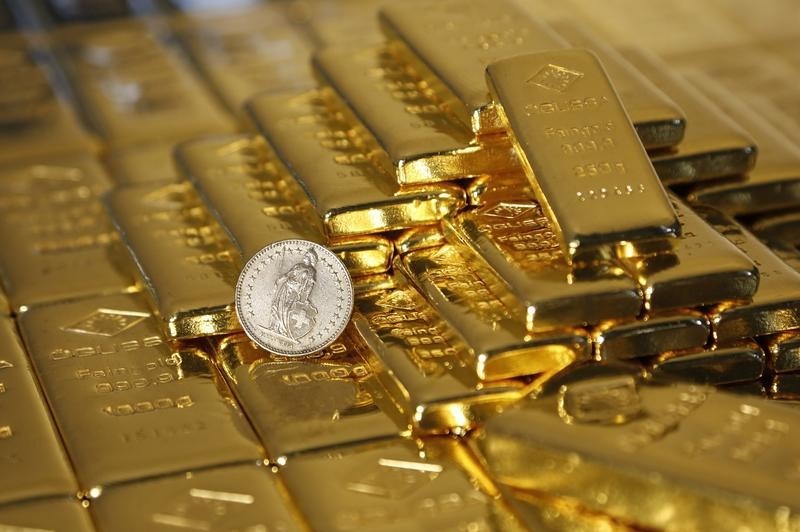Investing.com - Gold and silver prices fell to four-week lows on Monday, as investors continued to cut holdings of the precious metals on expectations of tighter U.S. monetary policy in the coming months.
Gold for December delivery on the Comex division of the New York Mercantile Exchange shed $8.10, or 0.71%, to trade at $1,133.30 a troy ounce during U.S. morning hours. It earlier fell to $1,132.50, the lowest since October 5.
Gold lost $23.60, or 1.87%, last week, the largest drop in nine, amid speculation the Federal Reserve may still raise interest rates this year.
The timing of a Fed rate hike has been a constant source of debate in the markets in recent months. The U.S. central bank has one more scheduled policy meeting before the end of the year in mid-December.
Gold had rallied in October as concerns over a global economic slowdown led by China and its impact on U.S. growth prospects had prompted market participants to push back expectations for a rate increase to March 2016.
But the Fed's hawkish statement last week forced market players to readjust expectations for higher interest rates to as early as December, triggering a sell-off in the bullion market.
Expectations of higher borrowing rates going forward is considered bearish for gold, as the precious metal struggles to compete with yield-bearing assets when rates are on the rise.
On the data front, the Institute for Supply Management said its index of purchasing managers fell to 50.1 last month from a reading of 50.2 in September. Analysts had expected the manufacturing PMI to dip to 50.0 in October.
Meanwhile, silver for December delivery tumbled 26.2 cents, or 1.68%, to trade at $15.30 an ounce after hitting a daily low of $15.25, a level not seen since October 5.
Elsewhere in metals trading, copper for December delivery on the Comex division of the New York Mercantile Exchange dipped 0.8 cents, or 0.35%, to hit a four-week low of $2.309 a pound during morning hours in New York.
Copper prices have been under pressure in recent sessions as persistent worries about future demand from top consumer China weighed.
The final Caixin manufacturing purchasing managers’ index for October released earlier rose to 48.3 from September's six-and-a-half year low of 47.2.
Despite the modest uptick, activity still contracted for the eighth straight month, fueling fears the economy may still be losing momentum despite a raft of stimulus measures in recent months.
Meanwhile, the official manufacturing purchasing managers' index published Sunday held steady at 49.8 in October, the weakest level since August 2012. Analysts had expected the index to inch up to 50.0 last month.
A reading below 50.0 indicates industry contraction. Copper traders view Chinese factory activity as an indicator of the nation's copper demand, as the red metal is widely used by the sector.
The Asian nation is the world’s largest copper consumer, accounting for almost 40% of world consumption last year.
